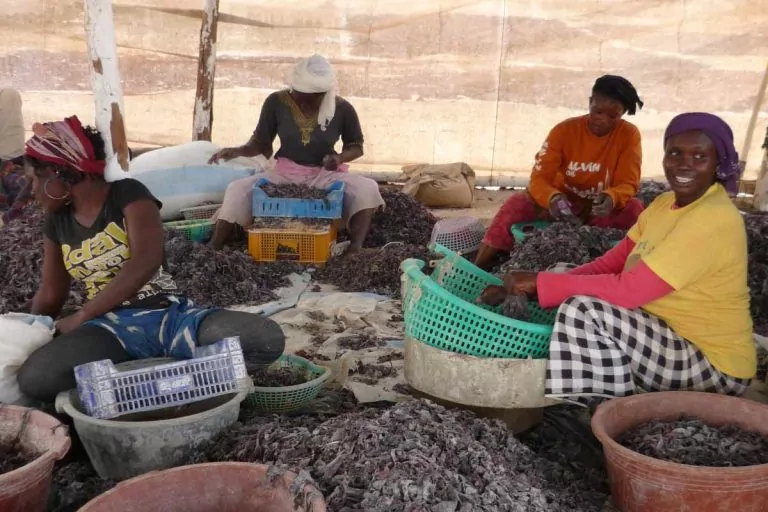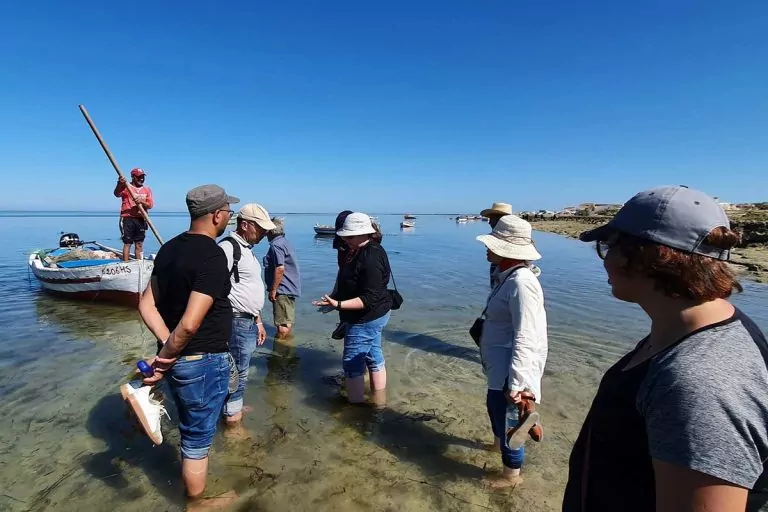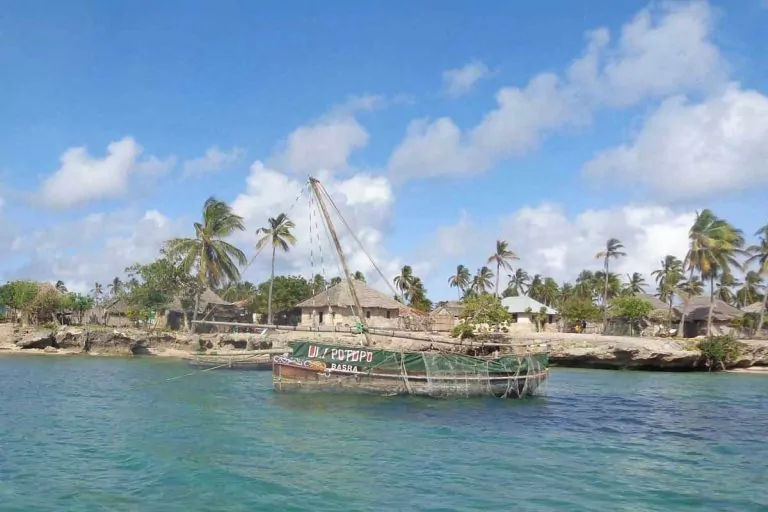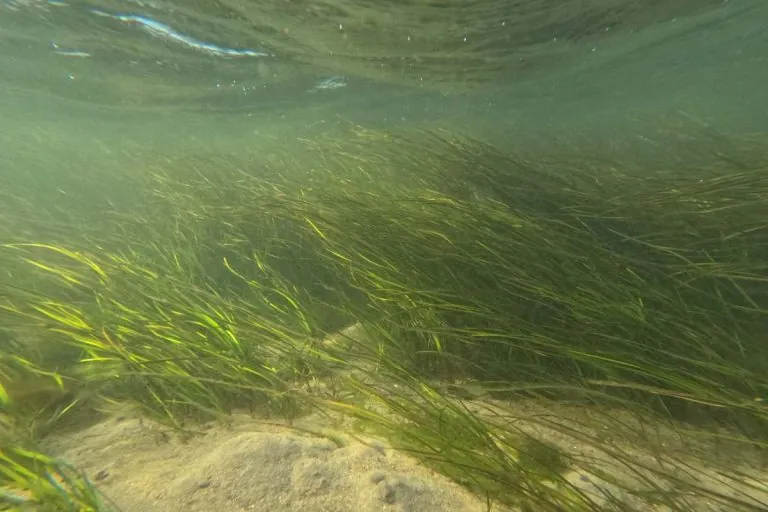Unlocking the Potential of Marine Nature-based Solutions
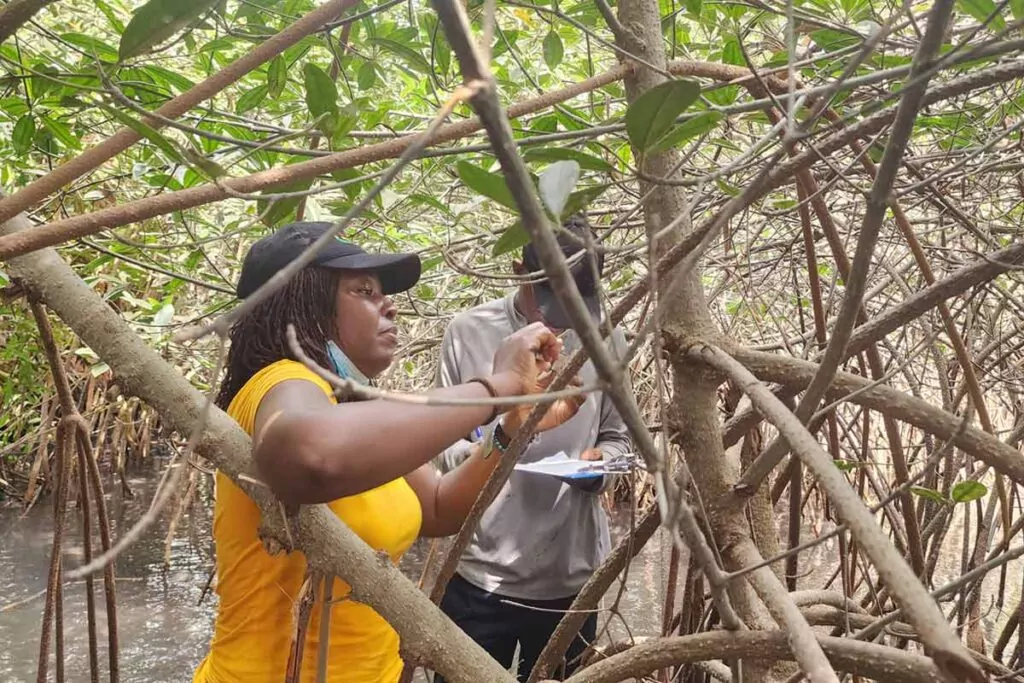
Actions to protect, sustainably manage, and restore natural or modified ecosystems, that address societal challenges effectively and adaptively, simultaneously providing human well-being and biodiversity benefits.“
Table of Contents
Safeguarding Marine and Coastal Ecosystems
Marine NbS focus on the conservation, restoration, and sustainable use of marine and coastal ecosystems. These are mainly mangrove forests, seagrass beds, salt marshes, coral reefs or oyster beds, kelp forests and other macroalgae. Marine NbS primarily, but not exclusively, benefit coastal populations and biodiversity. To fully achieve the full potential of NbS, healthy marine ecosystems are key. Therefore, NbS must be explicitly designed to provide tangible benefits for marine biodiversity.
The Role of Marine NBS in Carbon Storage and Climate Change Mitigation
The ocean acts as the planet’s largest heat sink, absorbing 90% of excess heat caused by climate change and 23% of human-induced CO2 emissions. By enhancing the role of marine ecosystems, marine NbS play a key role in advancing climate adaptation and disaster risk reduction. While engineered solutions are often employed to limit the risks posed by climate-related extreme weather events, natural disasters and climate change, experience suggests that NbS can generally offer key advantages for reducing the impacts of both sudden and slow onset events and are thus an effective alternative or addition to grey infrastructure. However, the current share of climate finance dedicated to NbS, especially for adaptation, remains low and needs to be upscaled significantly.
Apart from their benefits to climate adaptation, NbS are essential to conserve the ocean as a natural carbon sink. Unlike terrestrial ecosystems, whose carbon stored in the soil is released back into the atmosphere through aerobic decomposition processes, the conditions of the soils of blue carbon ecosystems ensure that the carbon is stored here over long periods of time.
The permanent storage function of marine ecosystems can, however, be volatile, as they may be affected through natural events such as climate risks and pollution. NbS cannot address all drivers of marine biodiversity loss and environmental change. Habitat destruction, pollution and over-exploitation are fuelled by drivers linked to economic growth, such as production and consumption patterns and international trade.
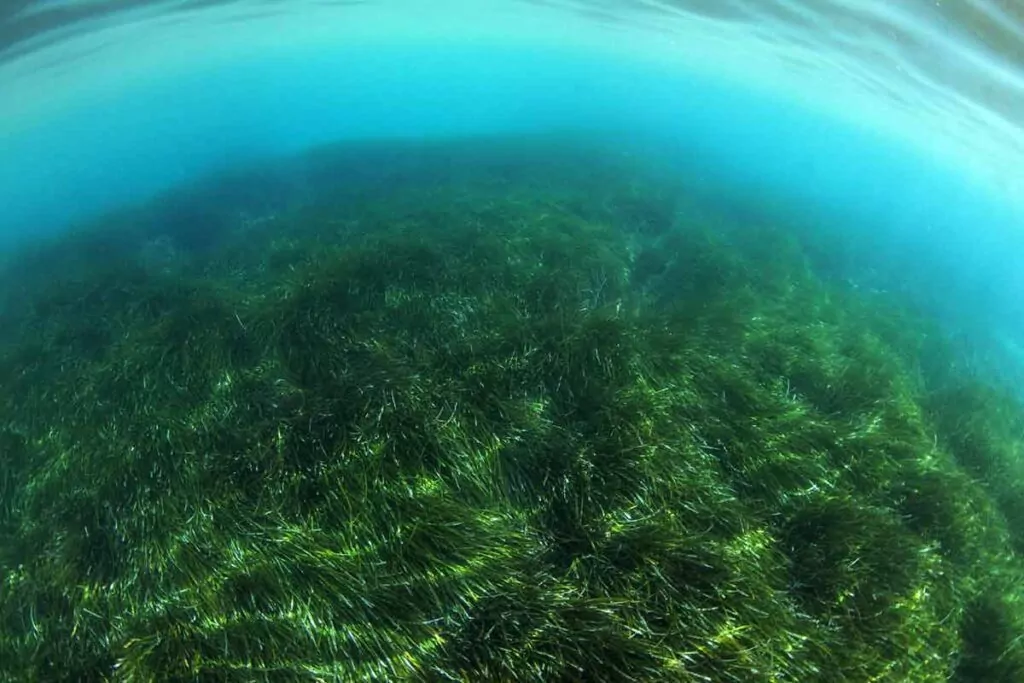
Blue carbon ecosystems: Mangroves, seagrass, kelp forests and tidal marshes
The term “Blue Carbon” is aptly named due to its association with the ocean, where it is primarily stored in the soil and silt up to six meters below the seabed. Blue Carbon ecosystems store larger quantities of carbon compared to terrestrial forests due to the rapid growth of their plants and anaerobic soils. Coastal Blue Carbon ecosystems cover just 2% of the ocean’s surface but contribute significantly by absorbing 50% of the ocean’s carbon.
Mangroves, seagrasses, kelp forests and tidal marshes play a vital role in storing carbon efficiently. Protecting and restoring these ecosystems contributes to increased resilience for local communities. Benefits include reduced flooding and erosion, storm protection, and the creation of jobs and food security. Despite these benefits, Blue Carbon habitats have faced severe degradation, with more than 50% of the world’s original salt marshes lost in the 20th century, and significant destruction of mangroves and seagrasses.
Coastal ecosystems: The role of mangroves in carbon storage
Mangroves stand out as powerful carbon sinks, storing five times more carbon per hectare than equivalent forested areas on land. Worldwide, they store more than 6.23 gigatons of carbon (Leal, M. & Spalding, M.D., eds. 2022. The State of the World’s Mangroves 2022. Global Mangrove Alliance). Mangroves also play a vital role in protecting coastal communities from natural hazards such as storms, erosion, and tsunamis. With extreme weather events becoming more intense and frequent, their importance is growing. Mangrove ecosystems alone protect over 6 million people from flooding annually and prevent substantial losses in productive assets.
The Important Contribution of Seagrass Beds in Blue Carbon Ecosystems
Seagrass plays an invaluable role in blue carbon ecosystems, uniquely preventing organic carbon from decomposing back into CO2, storing carbon up to six meters under the seabed in ocean floor silt. These underwater meadows composed of flowering plants are found along coastlines worldwide. Seagrasses possess unique root systems that anchor them to sediment layers on the seabed while effectively trapping sediments rich in organic matter containing large amounts of stored carbon dioxide. Furthermore, seagrass beds contribute significantly towards reducing ocean acidification by absorbing excess atmospheric CO2.
Kelp Forests: A Key Player in Climate Change Mitigation
Another intriguing marine NbS component contributing significantly towards climate change mitigation is represented by kelp forests thriving beneath the ocean’s surface near rocky shores or submerged structures such as piers or shipwrecks. Algae exhibit rapid growth rates due to abundant sunlight and nutrient availability, enabling them to absorb substantial quantities of CO2 from the surrounding water. As these marine plants flourish and eventually die off, they deposit their carbon-rich biomass onto the seafloor, thus serving as a significant source for long-term carbon storage.
The Importance of Tidal Marshes in Combating Rising CO2 Levels
Similarly influential are tidal marshes, which serve as vital buffers between land and sea environments whilst offering immense potential when it comes to combatting rising CO2 levels. These saltwater wetlands boast lush vegetation comprising reeds, grasses, and other hydrophilic plants that facilitate substantial biological productivity through photosynthesis. As they flourish in nutrient-rich estuarine waters or intertidal zones regularly inundated by tides, tidal marshes amass significant amounts of organic material which then undergo anaerobic decomposition under oxygen-limited conditions, leading to effective long-term carbon sequestration.
Ensuring Food Security and Protecting Marine Resources
It is important to recognize the crucial role that marine NbS plays in ensuring global food security. The ocean offers fish, seafood, and algae, all vital components of diets worldwide. As our population continues to grow, with increasing demands for food supplies, it is essential to prioritise the preservation and responsible management of our marine ecosystems. Through effective NbS strategies such as establishing marine protected areas and promoting sustainable fishing practices, we can ensure that future generations have access to healthy sources of protein and other essential nutrients.
In addition to providing sustenance for human consumption, maintaining thriving marine ecosystems also contributes significantly to ecological balance on a global scale. These vibrant underwater habitats act as nurseries for countless species, while supporting complex food webs that sustain life both within the ocean depths and beyond its borders.
Despite their significant potential for climate mitigation, adaptation, and biodiversity conservation, NbS alone cannot address the pressing need for a comprehensive socio-ecological transformation of the global economy: Decarbonisation, the rapid phase-out of fossil fuels and the reduction of further negative environmental impacts of our economies will be necessary. The 1.5 °C target of the Paris Climate Agreement can only be reached if global climate neutrality is achieved by 2050. This requires that the remaining greenhouse gas emissions are absorbed. While NbS offers promising strategies to tackle environmental challenges, they should not be seen as a substitute but rather as an integral part of a broader solution.
The significance of these efforts cannot be overstated. As our population continues to grow at an unprecedented rate, with increasing demands for food supplies, it is essential to prioritize the preservation and responsible management of our marine ecosystems. Through effective Nbs strategies such as establishing marine protected areas and promoting sustainable fishing practices, we can ensure that future generations have access to healthy sources of protein and other essential nutrients.
In addition to providing sustenance for human consumption, maintaining thriving marine ecosystems also contributes significantly to ecological balance on a global scale. These vibrant underwater habitats act as nurseries for countless species, while supporting complex food webs that sustain life both within the ocean depths and beyond its borders.

